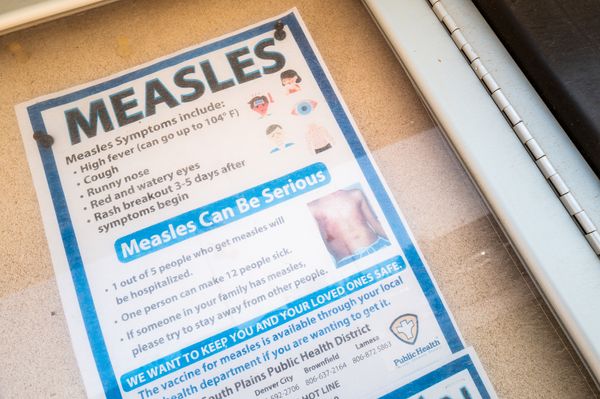Satellite-to-cellphone connectivity in remote locations is suddenly the rage in telecom again, some 23 years after Iridium and ICO Communications fell into bankruptcy. Will satellite-based smartphone services from Apple, T-Mobile US and potentially others prove more commercially viable this time?
Recent announcements from Apple and T-Mobile involve text-based services targeting ultra-rural and sparse dead-zone areas with no cellphone service. Apple has partnered with Globalstar while T-Mobile tapped Elon Musk's SpaceX and its Starlink satellite constellation.
Others in the satellite-to-smartphone connectivity race include Iridium Communications, a successor to the company that went bankrupt; AST SpaceMobile; Lynk Global and potentially Viasat or Amazon.com's Project Kuiper.
When rolling out new iPhones in September, Apple announced a new emergency SOS service using Globalstar's satellite network. Demand for new iPhone 14 models is key for AAPL stock. Like T-Mobile, Apple's satellite-to-smartphone service will offer text messaging, not voice calls.
Smartphones Not Around In 1999
T-Mobile and others aim to expand smartphone connectivity to satellite voice and data services over time. That's no small feat as the original Iridium learned the hard way. Its bulky, specialized handsets cost up to $3,500 with voice calling rates of $7 per minute. Motorola and other investors spent some $5 billion on the doomed Iridium network.
Apple and T-Mobile, though, plan to make their satellite-based services available on regular smartphones. Apple's service will be free to iPhone 14 buyers for two years.
"Back in the late 1990s the focus was really on voice calling and texting was an afterthought, as it didn't become a big part of the terrestrial mobile experience until the mid 2000s," said Tim Farrar, analyst and consultant at TMF Associates.
"Now most people make far fewer voice calls and are happy to communicate just by text, so the burden on the device to support that type of communication is much less," he added. "That's what has enabled the technology to be built into the latest iPhone without a big external antenna on the phone."
Globalstar stock popped on the Apple announcement. But some Wall Street analysts are cautious on prospects for the satellite-to-smartphone services.
Waiting For Voice, Data?
At Deutsche Bank, analyst Sidney Ho said of the Apple-Globalstar announcement: "It's an interesting feature, but we think usage will be limited until the feature supports voice and data, which will require significant investment in infrastructure."
Apple expects to have the emergency SOS service available by the end of 2022. Globalstar agreed to provide 85% of its current network capacity to iPhone users.
Apple bypassed the need for a special type of antenna with custom components and software that help point iPhones in the right direction.
By 2026, Globalstar aims to have a new satellite fleet in space with Apple's financial backing. Apple has reportedly set aside $450 million for the venture.
Meanwhile, Musk's Starlink and T-Mobile aim to make their initial text-based service available by late 2023. Musk has stated their plans are "constrained by regulatory approval." TMUS stock has gained 21% in 2022.
The Federal Communications Commission in September rejected SpaceX's application for nearly $900 million dollars in rural broadband connectivity funding.
At Cowen, analyst Gregory Williams said in a report that the T-Mobile-Starlink announcement falls short of the "holy grail" satellite phone. Other potential approaches also "suffer from either capacity (data speed) issues or coverage issues, serving one well, but not both," Williams added.
More Advanced Satellite Technology
The holy grail goal of providing a true cellular phone experience using a satellite network likely will prove elusive, he said.
"Unfortunately physics will make this a challenge, if not impossible," Williams said. Technical challenges include Doppler shifts — radio frequency changes created by fast-moving objects. Starlink satellites, for example, fly over the Earth at 18,000 mph.
Putting big antennas on smartphones isn't an option. But next-generation low-Earth-orbit satellites might improve performance.
Farrar told IBD that providing voice calls or high-speed data to smartphones might work if LEO satellites are equipped with much bigger antennas.
That's an approach startup AST SpaceMobile is taking. Its investors include cellphone tower maker American Tower and U.K.-based Vodafone. And, AT&T has let AST SpaceMobile use some of its radio spectrum for testing. AT&T says it's ahead of T-Mobile in getting regulatory approval, according to a Bloomberg report.
Analysts expect AST SpaceMobile to launch its first operational satellite in late 2023.
Meanwhile, SpaceX plans to include antennas for T-Mobile's spectrum on its next-generation satellites. The Starlink V2 satellites will feature larger, more powerful phased-array antennas. SpaceX aims to launch Starlink V2 satellites into orbit starting in 2023.
Another player could by Viasat, which is in the process of acquiring satellite firm Inmarsat.
Iridium Next Big Announcement?
After Viasat announced the sale of its military business to L3Harris for $1.96 billion on Oct. 3, Viasat Chief Executive Mark Dankberg in a blog post pointed to new opportunities in "the rapidly emerging satellite direct-to-mobile handset market."
Meanwhile, Iridium in late July said it had entered into a development agreement with the unnamed company.
At Raymond James, analyst Ric Prentiss said in a report following Apple's iPhone 14 launch: "We think the next major announcement will come from Iridium, which notably is the only current initiative using a complete constellation that is already fully deployed in space."
Garmin's inReach satellite subscription service uses Iridium's network. Garmin sells GPS communicators that range in price from $300 to $600.
Meanwhile, the assets of Iridium LLC were sold for $25 million to a private holding company in 2001. A reborn Iridium Communications went public in 2008 through a merger with GHL Acquisition, an Amex-listed special-purpose acquisition company.
In addition, Iridium stock now holds a market valuation of about $5.8 billion.
Iridium sells wholesale data services. While the U.S. government is its biggest customer, Iridium says it has almost 2 million subscribers in aviation, maritime and other industries.
UK's Bullitt Plans Satellite Messaging Smartphone
In the June quarter, earnings per share for IRDM stock rose 33% to 4 cents while revenue climbed 17% to $175 million. IRDM stock has advanced 11% in 2022.
Apple isn't the only device maker pursuing satellite connectivity. Alphabet's Google and China's Huawei also have projects underway.
Also, there's U.K.-based Bullitt Communications, which currently sells rugged cellphones. Bullitt has stated it plans to roll out a satellite messaging smartphone in early 2023.
Aside from commercial services, there's good reason for satellite firms to pursue smartphone links. For one, nearly 20% of the U.S. is not covered by terrestrial mobile networks, noted a Morgan Stanley report. First responder units could benefit in emergencies. Also, conventional mobile phone networks might fail in the event of disasters.
Follow Reinhardt Krause on Twitter @reinhardtk_tech for updates on 5G wireless, artificial intelligence, cybersecurity and cloud computing.







